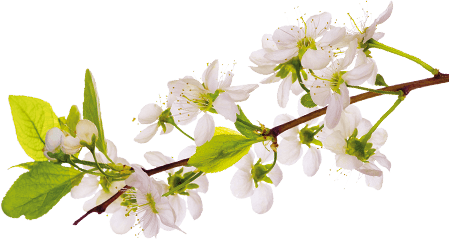Apr 07., 2018 / Everything, Foreign Versions
Insights from Language: Lackless Rhyme, part 1
Being a devoted wordsmith, it is not surprising that Patrick Rothfuss pays special attention to how his books are translated, as he discusses sometimes on his blog. While English is my first language, I have some competency in Japanese and French. I have both Japanese editions of NOTW (same text, just different covers), and have recently acquired the French versions of both NOTW and WMF . (WMF is not out in Japanese.) Being the obsessed fan that I am, I have started to look at some things across these language versions of the books.
I thought it would be fun to start with the topic Rothfuss discusses on the linked blog post above, shamble-men. I found both the Japanese and French choices for this translation interesting, since contrary to where the linked conversation about the Dutch translation seemed to be going with Rothfuss suggesting the derivation of a word based on other imagery (similar to the way he arrived at shamble-man), the translators used existing words.
The French book translates it as revenant (literally, revenant’s usage in the horror genre is a French loan-word). The Japanese version translates it as shura (修羅), derived from asura (阿修羅), which has the same roots as the Indian god Ashura/the concept of deva’s, etc. (For more info see also Asura.) Probably just the translator choices, but interesting trivia (to me anyway).
Now, onto the real topic I chose for this post, The Lackless Rhyme. You can see the full text of both English versions here.
The Japanese version (like most Japanese poetry) does not rhyme. The French version does, which probably means the French translator had to sacrifice a few more things to make it so. It’s funny how many new ideas popped out at me even just from the English version, during the process of really thinking about the language.
The Black Dress
The first version of the rhyme (which, since it appears in book one, I have access to in all three languages) begins:
Seven things has Lady Lackless / Keeps them underneath her black dress.
The French version reads: Sous sa robe noire sept choses /Dame Lackless a encloses
translated: “Underneath her black dress, Lady Lackless encloses seven things.” So pretty much the same, but using the word enclose to make the rhyme.
The Japanese literal translation is pretty much the same as the English, but Japanese has all sorts of fun nuances with their different alphabets, and so what is interesting the some of word and alphabet choices. To oversimplify, one Japanese alphabet is a phonetic one called katakana, and it is used for foreign words. Lady Lackless is written as ラックレス夫人 (LaKuReSu [katakana]-fujin[kanji]). This is pretty much what you’d expect, just like Daniel-san.
However, black dress is ブラックドレス (BuRaKu DoReSu), and this is not what I’d expect. It’s common to use ドレス for dress, but generally I would have expected this to be written 黒い ドレス (kuroi [Kanji] DoReSu [katakana]). Most Japanese people know at least a little English, and especially have an easy time with it in katakana. So most native readers would probably know what ブラック meant, and wouldn’t think much of it right next to another foreign word (dress). But looking with a critical eye, this choice suggests that Black Dress is important to the rhyme because of how it sounds when pronounced. What other important thing in the Chronicle sounds like black dress? Well, Blac of Drossen Tor. Once I drew this connection, it seemed pretty obvious this is why the term black dress is in the rhyme, in English or any other language. I can only assume the French translator didn’t have such a subtle way to incorporate this tidbit, since using the English “black dress” instead of “robe noir” would have stood out. Interesting as an example of the kinds of minute things that can get lost in translation, despite everyone’s best attempts.
Anyway, so, the Blac of Drossen Tor. What’s the second version of the rhyme say?
English: Seven things stand before /The entrance to the Lackless door.
French: Devant la porte des Lackless / Sept choses se tiennent sur le seuil.
(The Japanese isn’t available since the second rhyme appears in WMF.)
Again, the french translation is pretty literal, “Before the Lackless’ door, seven things stand upon the threshold.” One thing that is worth noting (although not really surprising) is that Lackless is plural here, enforcing that this door doesn’t just belong to one Lackless, it belongs to the Lackless family.
So, how to interpret all this? Well, I interpret it to mean that the Lackless door is underneath Drossen Tor.
The Ring Unworn
English: One a ring that’s not for wearing
and: a ring unworn
French: un anneau qui n’est pas fait pour être porté
and: un anneau qui n’est pas porté
Japanese: 環だが指にはめな (wa daga yubi ni hamenai)
This was very enlightening. The French grammar is a literal translation, but it is interesting that the translator chose “anneau” for ring both times. The more common choice for a ring like you wear on your finger is “bague.” Now, “anneau” could have that meaning, but it is more commonly used for things that have a ring-like shape, such as a circus ring or the rings of Saturn. The Japanese is even more interesting, because it says “a ring, but it doesn’t fit your finger.” Taken together, it suddenly becomes clear that we’re talking about something that not only isn’t worn as a ring on the finger, but it can’t be because it is not a finger ring at all, it is only ring-shaped. This is just a guess, but you know what another word for ring-shaped is? A circle. Like the circle of the Edema Ruh family.
Alternatively (and honestly more likely) as this reddit thread by Jezer1 suggests, the circle might be related to waystones. Remember that Dancing Among Stones tells us that the intact structure for waystones is a circle. (See Room 7B- the Stones.)
Or perhaps… the “broken circle” has a deeper history with the Edema Ruh than just its contemporary usage. Did some Ruh earn the contempt of their people by breaking a waystone circle?
The Forsworn Word
English: One a sharp word, not for swearing
and: One a word that is forsworn
French: un cri qui n’est pas fait pour être juré
and: un mot qui a été renié
Japanese: 言葉だが鋭くも罵声じゃない (kotoba daga surodokumo basei ja nai)
French translations: a cry that is not for being sworn
and: a word that is denied/disowned
Japanese: a word that is sharp but not for jeering/shaming
I don’t really know if the translation adds anything here…
Onto the rest of the rhyme in Part 2.












Serack / August 15, 2018., 8:50 am
So I got down to your conclusion about the ryme actually referring to the Blac of Drossen Tor and knew it wasn’t the first time I’d come across that conclusion. If you haven’t I highly recommend you pursue reddit user aerojockey’s breakdown is the two poems! https://www.google.com/amp/s/amp.reddit.com/r/KingkillerChronicle/comments/4zc5m4/lackless_poem_origins/
Serack / August 15, 2018., 8:53 am
Bah that link wasn’t a very good one. If this doesn’t work, go to /u/aerojockey’s profile and search for his topic on the “Lackless Poem Origins” https://www.reddit.com/r/KingkillerChronicle/comments/4zc5m4/lackless_poem_origins/?st=JKV4WO3U&sh=838b5cf1
aethel / August 15, 2018., 9:09 am
Yes, I thought this approach to deconstructing the poem was very interesting, and given Pat's approach to world-building, a good idea! I've seen some other reddit posts where similar phonetic approaches to Blac of Drossen Tor in other languages also support the same conclusion (German and Portugese I think...)